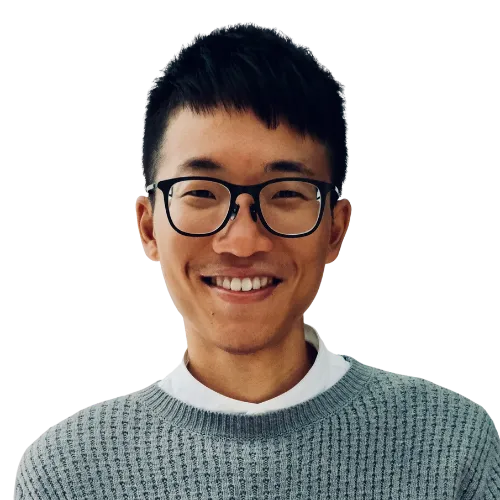“Do one thing every day that scares you.” — Eleanor Roosevelt
“Do what you dream of doing even while you’re afraid.” — Arianna Huffington
“If it’s your job to eat a frog, it’s best to do it first thing in the morning. And if it’s your job to eat two frogs, it’s best to eat the biggest one first.”
“The key is not to prioritize what’s on your schedule, but to schedule your priorities.” — Stephen Covey
“If you don’t prioritize, everything seems urgent and important. If you define the single most important task for each day, almost nothing seems urgent or important. Oftentimes, it’s just a matter of letting (fires burn/) small little bad things happen (e.g., return a phone call late and apologize, pay a small late fee, lose an unreasonable customer, etc.) to get the big important things done. The answer to overwhelm is not spinning more plates—or doing more—it’s defining the few things that can really fundamentally change your business and life.” — Tim Ferriss
1
先吃青蛙,再吃蝌蚪。
最重要的是戰勝次要。
First things first. Do the most important thing 2 first, not the most urgent one.
There is never enough time to do everything, but there is always enough time to do the most important thing.
早上是一天當中最有精力、思路最清晰、心智能量最彙集/最強大的時刻,要用來做:
- Things that genuinely matter to you.
- Things that require lots of brain power (e.g., writing, coding).
- Things that you are easily tempted to do something else.
- Things that you are not enjoying that much.
- Things that you feel most uncomfortable with and scare you most, usually due to some chances of rejection or conflict.
Tim Ferriss’ Framework
- Wake up at least 1 hour before you have to be at a computer screen. E-mail is the mind killer.
- Make a cup of tea (I like pu-erh) and sit down with a pen/pencil and paper.
- Write down the 3 things — and no more — that are making you most anxious or uncomfortable. They’re often things that have been punted from one day’s to-do list to the next, to the next, to the next, and so on. Most important usually = most uncomfortable, with some chance of rejection or conflict.
- For each item, ask yourself:
- “If this were the only thing I accomplished today, would I be satisfied with my day?”
- “Will moving this forward make all the other TODOs unimportant/irrelevant or easier to do later?”
- Look only at the items you’ve answered “yes” to for at least one of these questions.
- Block out at least 2–3 hours to focus on ONE of them for today. Let the rest of the urgent but less important stuff slide. It will still be there tomorrow.
- TO BE CLEAR: Block out at least 2–3 HOURS to focus on ONE of them for today. This is ONE BLOCK OF TIME. Cobbling together 10 minutes here and there to add up to 120 minutes does not work.
- If you get distracted or start procrastinating, don’t freak out and downward spiral; just gently come back to your ONE to-do.
The Pickle Jar Theory(醃漬罐理論)
The Pickle Jar Theory is a time management technique that prioritizes tasks based on importance, using the analogy of fitting different-sized items (rocks/boulders, pebbles, and sand) into a jar to represent one’s daily schedule or time available.
The idea is to start with the most important tasks / fill the jar with the biggest rock/boulders first, followed by medium-priority tasks (pebbles), and finally, less important tasks (sand).
This method helps to maximize time and ensure that the most important items are addressed first, preventing them from being overshadowed by less critical activities.
Think of your time as a jar. If you don’t make space for the big rocks, the little pebbles and tiny sand will fill your whole jar. And you’ll always wonder why you’re not getting anything meaningful done.
限制/約束理論
“The capacity of the plant is equal to the capacity of its bottlenecks. (工廠的產能等於瓶頸的產能。)” ― Eliyahu M. Goldratt, The Goal: A Process of Ongoing Improvement
“Since the strength of the chain is determined by the weakest link, then the first step to improve an organization must be to identify the weakest link.” ― Eliyahu M. Goldratt, The Goal: A Process of Ongoing Improvement
The Theory of Constraints
The key idea is that every system has at least one constraint that restricts its ability to grow or meaningfully improve its desired output.
In other words, there is a bottleneck that prevents the system from improving.
By focusing attention on improving the constraint—eliminating the bottleneck—you can dramatically improve the performance of the entire system.
- STEP 1. Identify the system’s bottlenecks. (找出瓶頸)
- STEP 2. Decide how to exploit the bottlenecks. (善用瓶頸)
- STEP 3. Subordinate everything else to the above decision. (遷就瓶頸)
- STEP 4. Elevate the system’s bottlenecks. (提升瓶頸)
- STEP 5. If, in a previous step, a bottleneck has been broken go back to step 1. (持續改善)
- 什麼要改變?(What to change?)
- 要改變成什麼?(What to change to?)
- 如何造成改變?(How to cause the change?)
- Sacred Morning Free Time, where you can take advantage of the tranquility of the quiet morning
- Quite/Dark Hours
- The Golden/Holy/Power Hour
- Spending an hour in the morning before checking any emails, notifications, or text messages, and exclusively working on the “Important but not Urgent” stuff.
- Magic Time
- This is a long/solid/consecutive/uninterrupted/unbroken blocks/slabs of time, where you are three times more productive than usual.
- “An hour before 9 is worth two after 5.” — It feels like gaining extra hours in your day!
You need to find XXX in your day, and ruthlessly foster/protect it from all the time thieves in your life. When you combine XXX with a deadline, you QUADRUPLE your productivity.
As those time-chunks get separated and fragmented, my productivity drops spectacularly.
Why is it so hard to just do the work?
